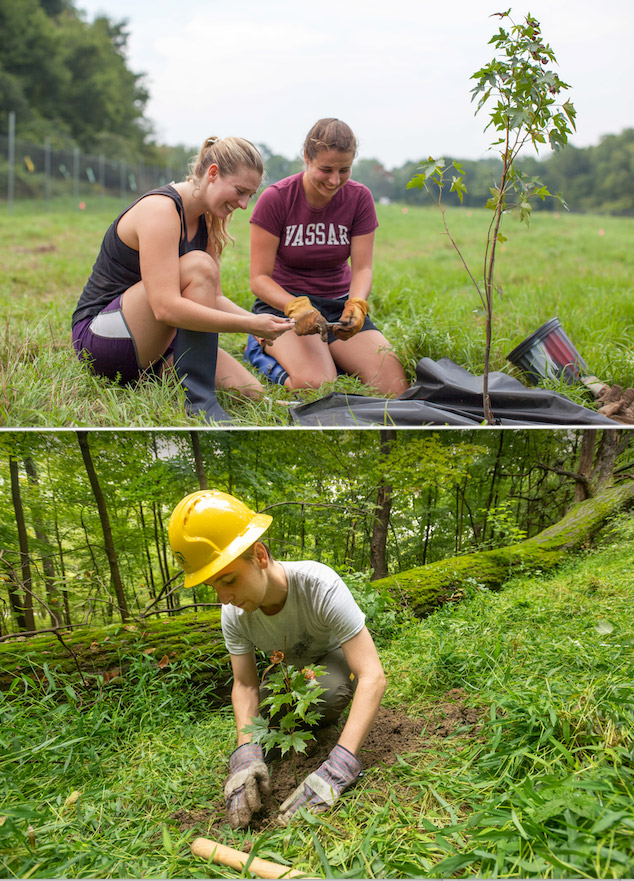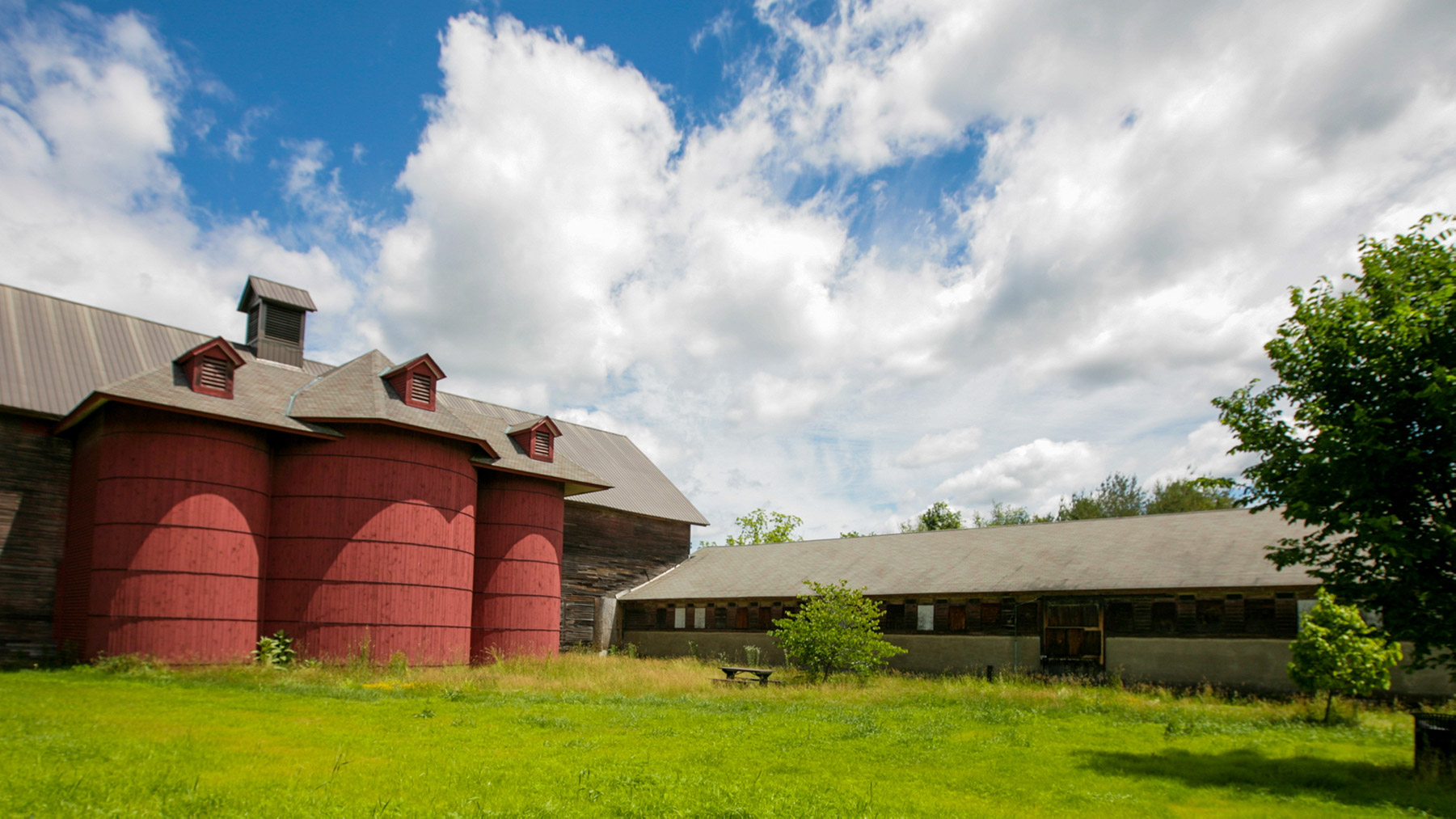Jill Troy Werner ’71 remembers exactly where she was on the original Earth Day, April 22, 1970, as one of New York’s iconic streets was closed to vehicular traffic from Central Park to Union Square. “I don’t think I could ever forget that,” she says. “It made quite an impression, being on Fifth Avenue with a gazillion other people.” That same spring day, her classmate Mary Price, a biology major who was spending the second semester of her junior year at Haverford, recalls there was “certainly a lot of enthusiasm” in Philadelphia, where tens of thousands gathered in Fairmount Park.

Fifty years later, the classmates’ attendance at the two biggest events on the very first Earth Day seems less a coincidence than a harbinger of things to come. With ’71’s landmark Reunion approaching, Werner has created an Endowment for Research and Teaching on Climate Change and Sustainability, while Price and her husband, Nick Waser—both of whom are field ecologists—have made a gift to support “people and programs” at the Vassar Farm and Ecological Preserve. And that, in turn, has inspired their class to fund the Class of 1971 Gateway to the Old Vassar Farm as its 50th Reunion gift. “It was Mary and Nick’s and Jill’s gifts that led us into this project,” says class president and AAVC Director Amy Pullman.
If this all seems serendipitous, things didn’t start out that way. When Mary Price arrived on campus in the fall of 1967, she was barely aware that almost half the College’s acreage comprised a farm that had once helped to stock its kitchens with milk, eggs, and vegetables. “It was Professor Margaret Wright of the Biology Department who turned me on to the Farm,” says Price. “She was concerned because she had the impression that the College was having discussions that year about selling it, due to financial pressures.” Wright eventually would lead a group of faculty to draft a proposal that resulted in Vassar adopting a mixed-use plan in the 1970s that designated part of the Farm as an ecological preserve for conservation and research. Price remembers returning to campus to visit Wright in the 1980s: “There was a trailer on the Farm. That was the first field laboratory!”
Price’s memories of Wright helped spur her and Waser to visit campus in the fall of 2019, where they met with Professor of Biology Meg Ronsheim, who had once worked as their assistant at the Rocky Mountain Biological Laboratory. ”Upon seeing how much Vassar had done with the Farm and Ecological Preserve, the couple was inspired to make it a beneficiary of their philanthropy. “We’ve taught many classes out in nature,” says Waser. “The Farm is an external reality that can get students away from virtual reality, not only students in the sciences, but in the arts, too. As scientists, we want to foster Vassar’s laudable progress in breaking down artificial boundaries between arts and nature.”

“The liberal arts fold humans into nature in every sense. Interaction with the biosphere sparks creativity,” adds Price. “In conversation with Meg’s students, one of the things that stuck with us was a student saying, ‘You know, very few of my classmates know about the Farm. It’s not part of campus. They don’t know how to get there.’ We want to help change that.”
About the same time Price and Waser began contemplating their gift, Jill Werner was reading about the College’s many programs that deal with sustainability. “I was intrigued,” she says. “I felt for all our political division, the overriding factor is, if we’re living on a planet that’s not sustainable, none of that matters.
“The planet seems smaller than ever in this pandemic. Thinking about Al Gore talking about all this 30 years ago, we haven’t made a dent. The numbers are going in the wrong direction, with the ice cap melting and locusts in Ethiopia. I live in Southern California. In the summer of ’19, I was not allowed to get to my house because of uncontrolled fires. It’s a very fragile world we live in, and we have a long way to go to educating people about that.”
As she thought about a gift that could help Vassar achieve that goal, Werner says, “I wanted it to be available to students as well as faculty members. I wanted to sprinkle the benefits among a bigger group of people so it covers many things—on-campus speakers, summer internships. Hopefully it will accomplish that. I’m hoping some fabulous Vassar student will put their intelligence to work on this, and have an impact.”
In light of the gifts from Werner and from Price and Waser, the Class of ’71 leadership saw an opportunity. “We wanted our gift to align with the College’s interests, and leave a truly lasting mark,” says Pullman. In fact, Vassar’s draft master plan for the Farm and Ecological Preserve identified a particular issue that the class leadership independently had perceived. “There’s the critical importance of connecting with the main campus from across Hooker Avenue,” says Price. “We need to circumvent that very boring road and make it amenable to and pleasant for pedestrians and cyclists—a more inviting pathway that puts it on the map, making sure that Vassar students are aware of it.”
And that struck a chord, says Pullman. “We wanted to bring the Farm back to the campus. There are so many ways to keep it changing and moving and evolving. We didn’t want a stodgy project. As old ladies, we didn’t want the class of ’71 Knitting Room. We want to connect to the past and the future; that’s the gateway part. We’re Vassar people, and we care about our planet and the future.”
For Jill Werner, the way the class gift will complement her own and Price and Waser’s is not only appropriate, but also evocative of the time when all of her class was on campus. “It was a weird time in the world, a very transitional time, and we were happy to be a part of that,” she says. “This is all very Class of ’71-ish, very earth-ish, hippie-ish. I love it!”
